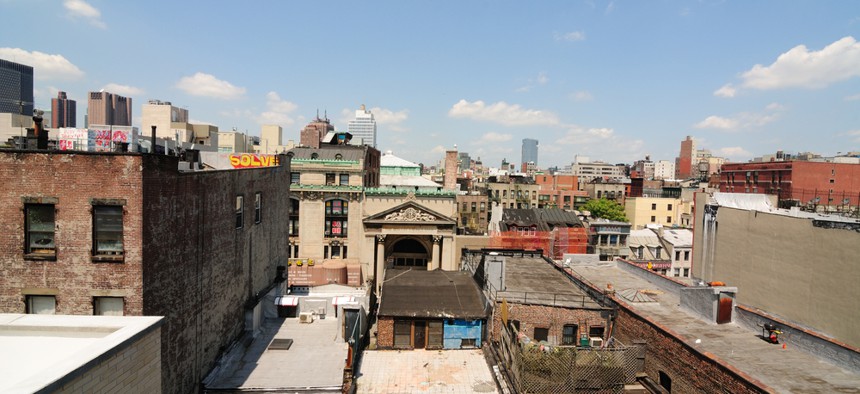A Plan to Drastically Reduce New York's Poverty

New York City Sean Pavone / Shutterstock.com
A comprehensive package of assistance programs can lower the city's poverty rate by 69 percent.
New York City's official poverty rate was around 20 percent in 2012, well above the national rate of 15 percent. A 2014 report commissioned by the city blamed the usual suspects: low wages, high rents, and unemployment. It also highlighted the value of government assistance programs in helping bring down the number of poor New Yorkers.
A new Urban Institute analysis tested seven types of government-assistance programs to see which one would have most impact in New York. It found that while a transitional jobs program might make the most difference compared with the other policies, only a combination of all seven programs would drastically bring down the city's poverty rate.
The UI report, commissioned by three New York-based non-profits, analyzed the impact of the seven assistance programs on a baseline poverty rate of 21.4 percent. It found that a transitional jobs program alone would bring the poverty rate down from 21.4 percent to 15.9 percent:

A transitional jobs program would reduce the poverty rate more than any other government program tested. (Urban Institute)
Almost half of poor New York families include at least one adult who is able to work full-time but currently isn't employed. A transitional job that guarantees employment for at least a year, and could lead to a full-time job, adds substantially to the household resources, says Linda Giannarelli, one of the authors of the report. Plus, it would give the family access to other benefits like the Earned Income Tax Credit. The report assumes that transitional jobs would be available to anyone who wanted them, and that a quarter to a half of people who wanted the jobs would actually sign up.
The report's main takeaway, though, is that only a package of policies candrastically reduce the city's poverty, says Giannarelli. It's a conclusion she hasnoted upon examining other cities as well. The New York analysis finds that depending on how the assistance programs are combined, the city's poverty rate could decline by as much as 69 percent.
"Different families are affected by different policies," says Giannarelli.
While one family might be poor because it has an elderly or disabled member who is unable to work, another family might include someone who is able to work but unemployed. A third family might have members who work minimum wage jobs that don't pay enough to support the entire household. A multi-benefit package could address all these scenarios, and reduce the poverty rate from 21.4 percent to 6.7 percent, the report finds:

The city's poverty rate could drop from 21.4 percent to 6.7 percent depending on how the government assistance programs are combined. (Urban Institute)
The report also includes the estimated costs of adding new individual benefits (below, top) or one of the combinations (below, bottom). Among the individual benefits, a transitional jobs program where half of the eligible workers participate would be the most expensive:

Transitional jobs, which offer the most benefits, may also be the most expensive policy option. (Urban Institute)

The estimated costs of various policy packages included in the UI analysis. (Urban Institute)
Those aren't insignificant costs. But then poverty isn't an insignificant problem.





